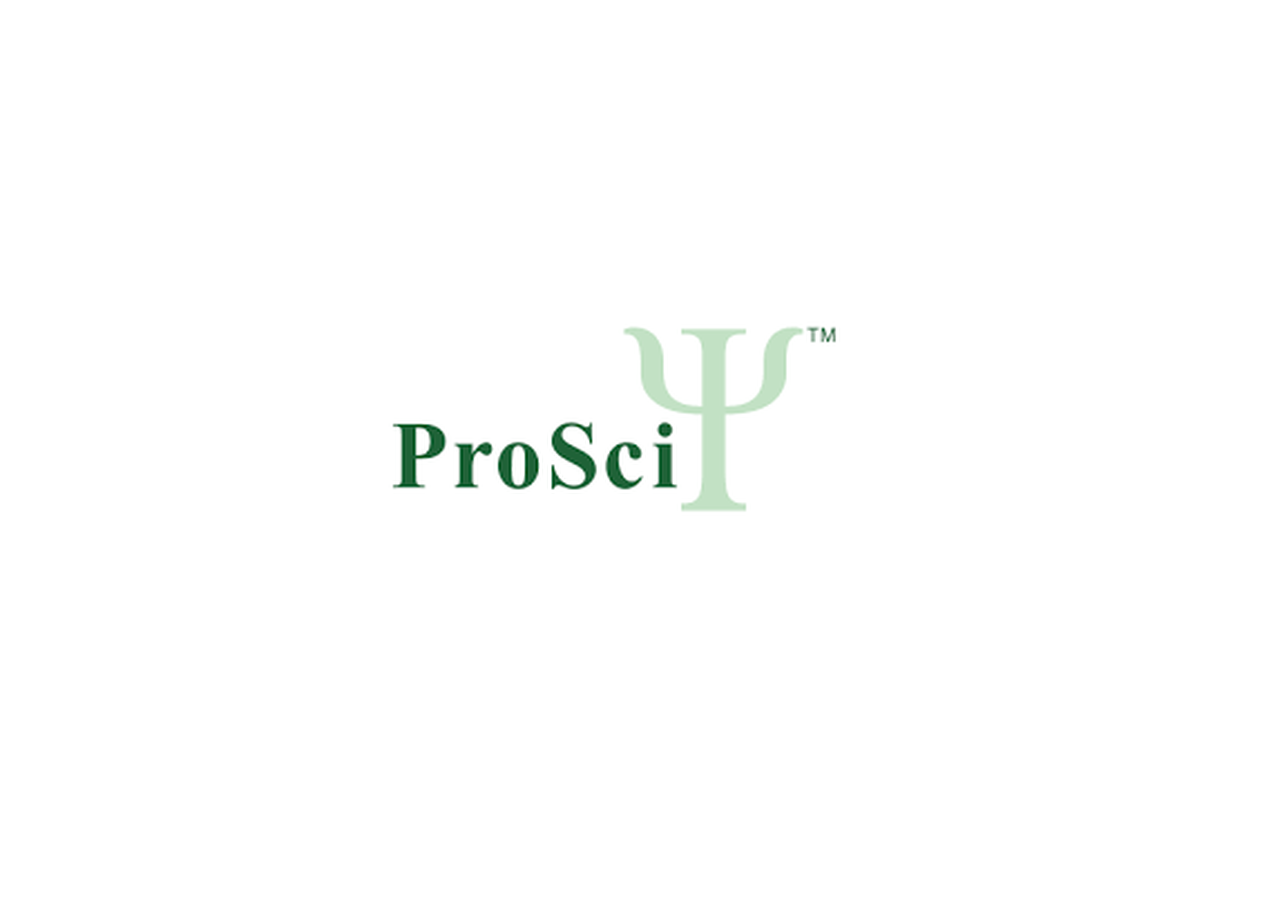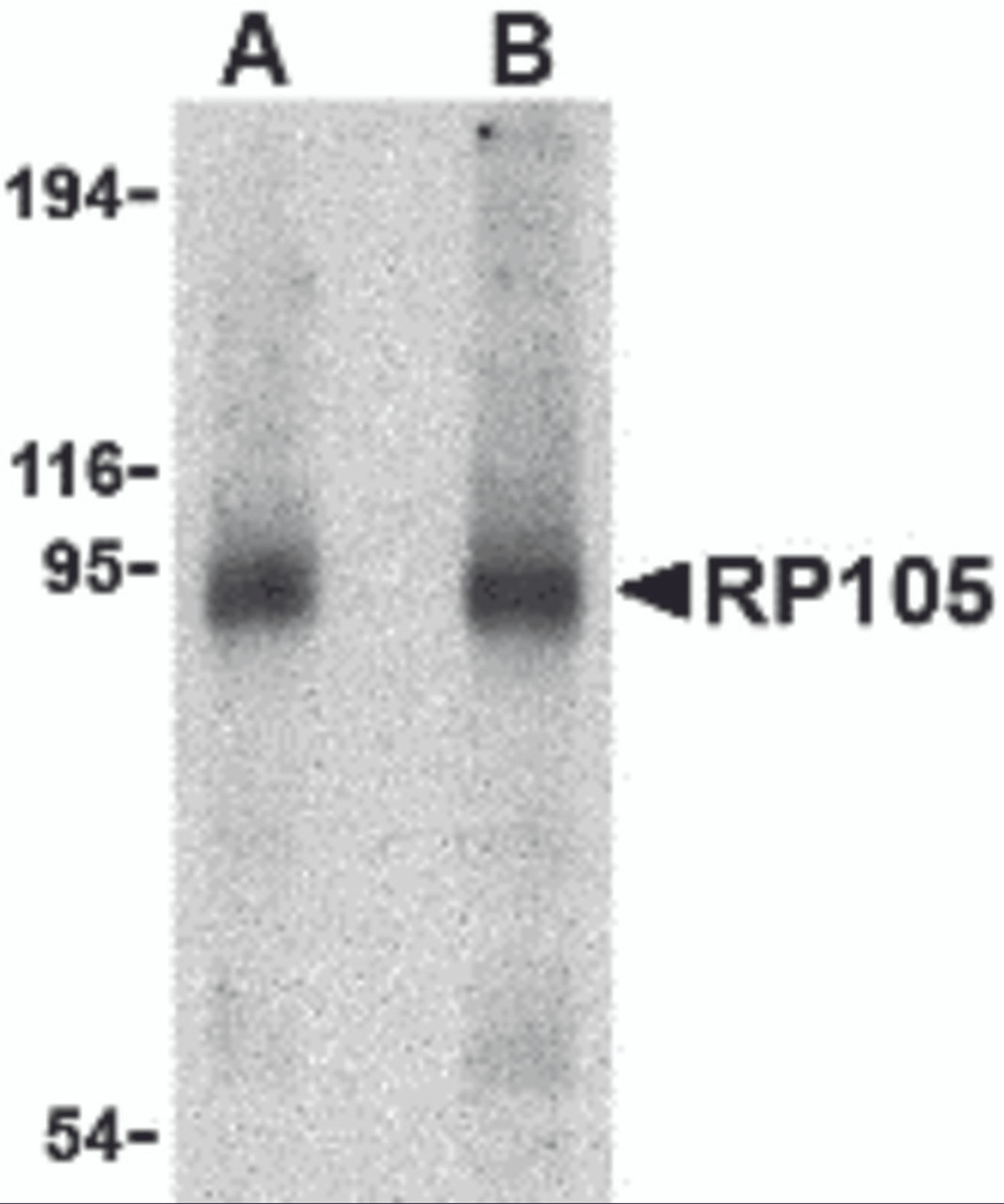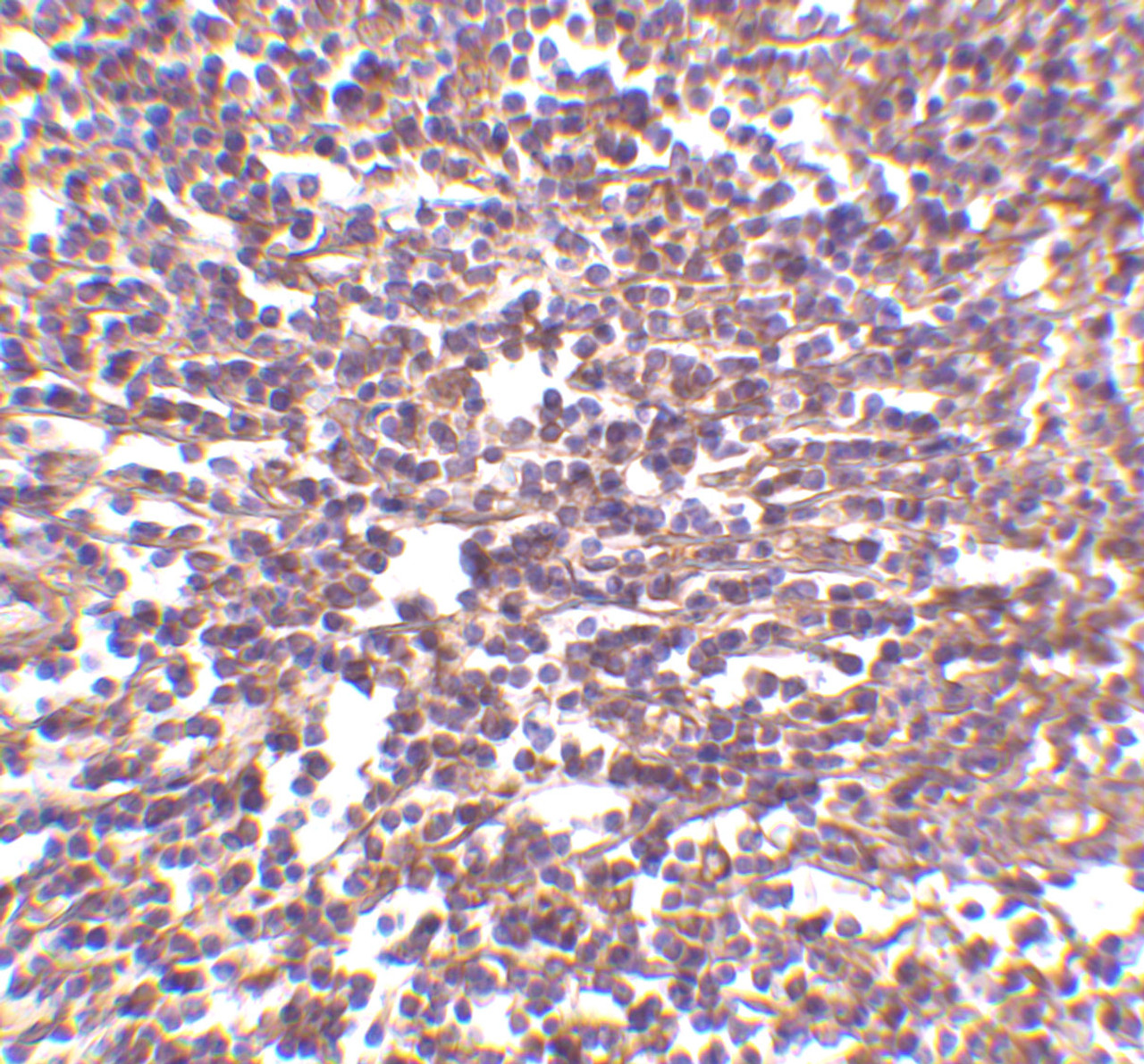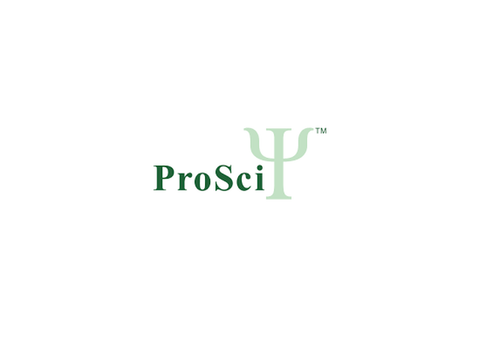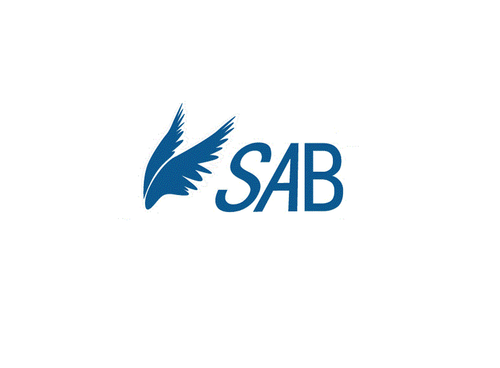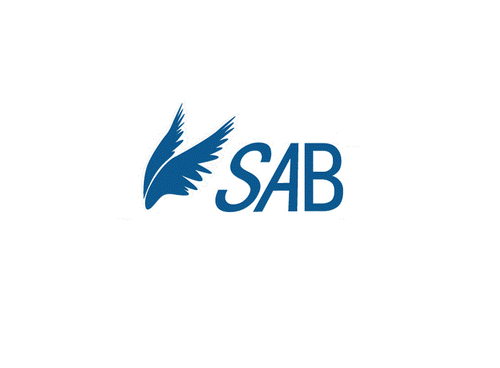Product Description
RP105 Antibody | 3845 | ProSci
Host: Rabbit
Reactivity: Human, Mouse
Homology: N/A
Immunogen: RP105 antibody was raised against a 14 amino acid synthetic peptide from near the center of human RP105.
The immunogen is located within amino acids 170 - 220 of RP105.
Research Area: Immunology
Tested Application: E, WB, IHC-P, IF
Application: RP105 antibody can be used for the detection of RP105 by Western blot at 0.5 - 1 μg/mL. Despite its predicted molecular weight, RP105 often migrates at 95 - 105 kDa. Antibody can also be used for immunohistochemistry starting at 2 μg/mL. For immunofluorescence start at 10 μg/mL.
Antibody validated: Western Blot in human samples; Immunohistochemistry in human samples and Immunofluorescence in human samples. All other applications and species not yet tested.
Specificiy: N/A
Positive Control 1: Cat. No. 1306 - Human Spleen Tissue Lysate
Positive Control 2: Cat. No. 10-901 - Human Spleen Tissue Slide
Positive Control 3: N/A
Positive Control 4: N/A
Positive Control 5: N/A
Positive Control 6: N/A
Molecular Weight: N/A
Validation: N/A
Isoform: N/A
Purification: RP105 Antibody is affinity chromatography purified via peptide column.
Clonality: Polyclonal
Clone: N/A
Isotype: IgG
Conjugate: Unconjugated
Physical State: Liquid
Buffer: RP105 Antibody is supplied in PBS containing 0.02% sodium azide.
Concentration: 1 mg/mL
Storage Condition: RP105 antibody can be stored at 4˚C for three months and -20˚C, stable for up to one year. As with all antibodies care should be taken to avoid repeated freeze thaw cycles. Antibodies should not be exposed to prolonged high temperatures.
Alternate Name: RP105 Antibody: LY64, Ly78, RP105, LY64, CD180 antigen, Lymphocyte antigen 64
User Note: Optimal dilutions for each application to be determined by the researcher.
BACKGROUND: RP105 Antibody: Toll-like receptors (TLRs) are evolutionarily conserved pattern-recognition molecules resembling the toll proteins that mediate antimicrobial responses in Drosophila. These proteins recognize different microbial products during infection and serve as an important link between the innate and adaptive immune responses. The signaling of these TLRs is kept under tight control by the expression of endogenous inhibiting proteins. One such protein is RP105, a recently identified homolog to TLR4 that, with MD-1, interacts with and inhibits the TLR4/MD-2 signaling pathway. It has also been suggested that the RP105/MD-1 complex influences antibody production mediated by both TLR4/MD-2 and TLR2 receptor complexes.
 Euro
Euro
 USD
USD
 British Pound
British Pound
 NULL
NULL

